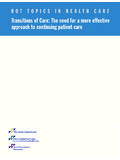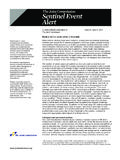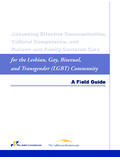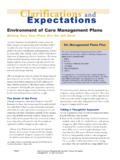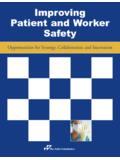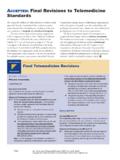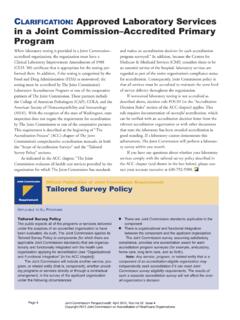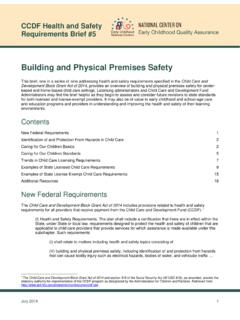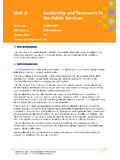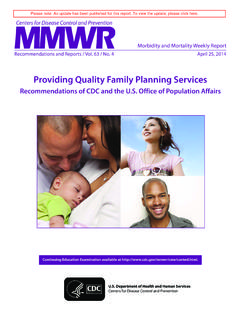Transcription of Some statistics about languages in the United States
1 EMBARGOED UNTIL MAY 28. Issue 13 May 2015. Overcoming the challenges of providing care to LEP patients Issue: If your organization hasn't experienced the challenges of providing care to a patient with limited English proficiency (LEP), the likelihood of it happening in the near future is very good. Approximately 57 million people, or 20 percent of the population, speak a language other than English at home, and approximately 25 million, or percent of the population, are defined as being There is a large and growing population of LEP patients.
2 According to Pew Research Center, between 2000 and 2013, non-Hispanic whites became the minority population in 97 counties in the It is also projected that by 2021, approximately 50 percent of the newly insured will be minorities, and less likely to speak See the sidebar for more statistics . LEP patients are at a higher risk for adverse events than English- Some statistics about languages in the United States speaking patients. Language barriers significantly impact safe and 322 languages are spoken in the , ranging alphabetically from Abnaki to Zuni, effective health care.
3 A study and in number of speakers from English (215,423,555) to Kalispel (4). analyzed 1,083 adverse-incident Top 10 most common languages spoken in the (in order): English, Spanish, reports from six Joint Commission- French, Chinese, German, Tagalog, Vietnamese, Korean, Italian, Russian accredited hospitals for LEP and 24 languages were reported in all 50 States and the District of Columbia, 69. languages were reported in at least 40 States (including ), and 105 languages English-speaking patients for seven were reported in at least 20 States (including ).
4 Months in 2005. The study found Largest number of languages by state: California (207), New York (169), Washington that percent of LEP patients (163), Texas (145), Oregon (138), Pennsylvania (135), Florida (134), Illinois (132), experienced physical harm versus New Jersey (130), Arizona (129). percent of English-speaking Fewest number of languages by state: Wyoming (56), South Dakota (62), Vermont patients. The LEP patients also (64), North Dakota (66). experienced higher levels of physical 26 States reported more than 100 languages spoken within their borders, including harm ranging from moderate 22 that exceeded 110 languages and 15 that exceeded 120 languages temporary harm ( percent) to 16 States reported 90 or fewer languages , including 11 that reported fewer than 80.
5 Death ( percent).4 languages Counties that have 100 or more languages spoken: Los Angeles County, California When compared to English-speaking (135), King County, Washington (118), Maricopa County, Arizona (110), San Diego patients, LEP patients have:5 County, California (110), Cook County, Illinois (109), Queens County, New York Longer hospital stays when (105), Santa Clara County, California (104), Alameda County, California (101), and professional interpreters were Orange County, California (100). not used at admissions and/or discharge Source: English Foundation.
6 Greater risk of line infections, surgical infections, falls, and pressure ulcers Greater risk of surgical delays due to difficulty understanding instructions, including how to prepare for a procedure Greater chance of readmissions for certain chronic conditions due to difficulty understanding how to manage their conditions and take their medications, as well as which symptoms should prompt a return to care or when to follow up The following scenario was adapted from an online video produced by the Department of Justice Civil Rights Division.
7 It illustrates the inherent difficulties and dangers of trying to provide care to an LEP patient without the use of appropriate and effective interpretive services or (Cont.). Legal disclaimer: This material is meant as an information piece only; it is not a standard or a Sentinel Event Alert. The intent of Quick Safety is to raise awareness and to be helpful to Joint Commission-accredited organizations. The information in this publication is derived from actual events that occur in health care. The Joint Commission, Division of Health Care Improvement Quick Safety Issue 13, May 2015.
8 Page | 2. Scenario: A non-English speaking Asian male walks into the emergency room (ER) triage area holding his right wrist. He tells the triage coordinator (TC) he fell and his wrist hurts a lot. He is asked if he speaks English and he says no. The TC calls a nurse and tells him there is a patient who doesn't speak English. The nurse calls a hospital computer tech who is Asian, tells her there is a patient in the ER who doesn't speak English, and her help is needed to interpret. The computer tech says she speaks Thai, but she might be able to help.
9 The patient is put on the phone, and he tells the tech his pain is getting worse. She does not understand, but thinks the language is Vietnamese. The nurse remembers there is a Vietnamese clerk but finds out she has gone home. The nurse takes the patient into the ER, where he tries to tell the physician his pain is worse. The physician attempts to obtain a history, but is not able to understand. The physician orders an X-ray and a pain medicine for the patient. After taking the medicine, the patient is left unattended and is later found on the floor, unresponsive, and a code is The following are actual patient-safety reports from one hospital in a study7 of LEP patients: A new patient arrived in the infusion unit for the first IP taxol appointment without orders, consent, or a recent physician's note.
10 The patient did not speak English. An interpreter and MD were called. This resulted in a delay in treatment. Informed consent was obtained, with no Spanish interpreter, in the ER. The patient did not understand the procedure when asked by the interpreter. The patient is Ethiopian speaking. On multiple occasions, there had been a failure to provide an interpreter. She has been using family members to translate, and they are not always available. This is unacceptable, as we have had issues with medications ( , which to take, when), and I believe her worsening diabetes is a direct result of my inability to have effective clinical meetings with her.
